Travel guide: Nova Scotia historic sites & museums! Road trip to Lunenburg, Shelburne, Yarmouth, Annapolis, Grand Pré.

It’s official: I love Nova Scotia! I spent July road-tripping through the Canadian Maritime province to see the top historic sites and museums — and out of all my travels, this one was an easy 5 out of 5 stars.
Photographer Joey Wong and I started in Halifax and looped south to Lunenburg, Shelburne, Yarmouth, Annapolis Royal, Grand Pré and Wolfville — with lots of stops for seafood and scenic views along the way.
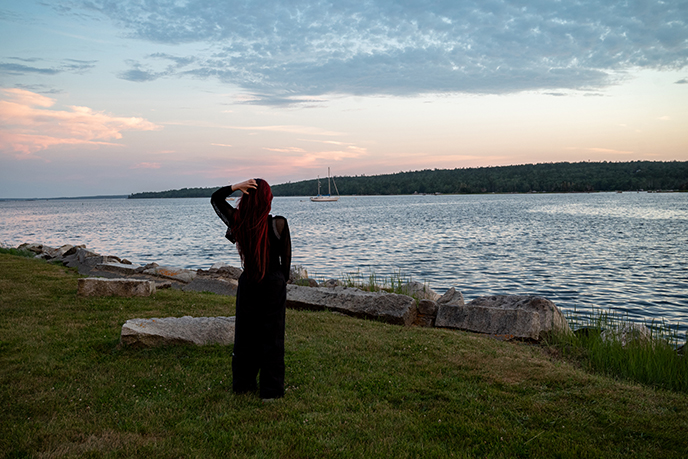
There were so many standout moments from our NS trip, like this sunset at Shelburne, but we’ll never forget the genuinely friendly and down-home people we met along the way. (It felt like going back in time to the happy 1990s, the best era that ever was!)
Read on for our travel guide and itinerary to Nova Scotia‘s best heritage attractions (including quirky museums and UNESCO sites), and see my reel for video footage of each of these places.

From Halifax, we drove about an hour southwest to Old Town Lunenburg. Founded in 1753, this British settlement is filled with beautifully preserved historic architecture.
I’m giving the devil horns in front of St. John’s Anglican Church, a large black and white Gothic landmark in the center of town.
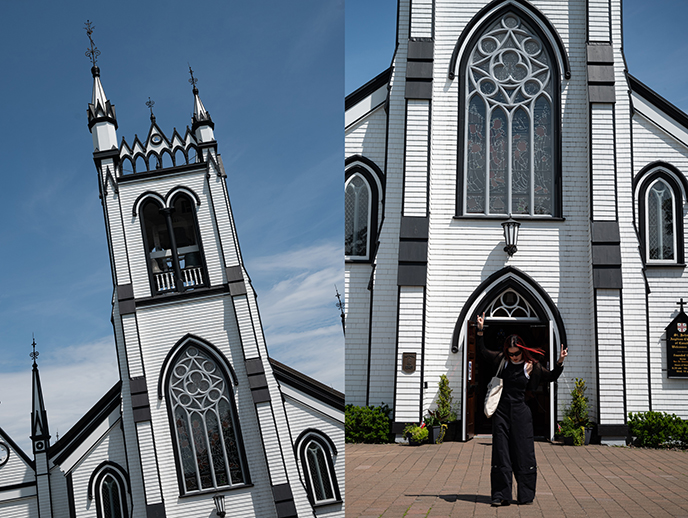
Fun fact: one Halloween night, not too long ago, the original church mysteriously burned down! To this day, locals have no idea who set the Goth church on fire on October 31st… but there are theories…
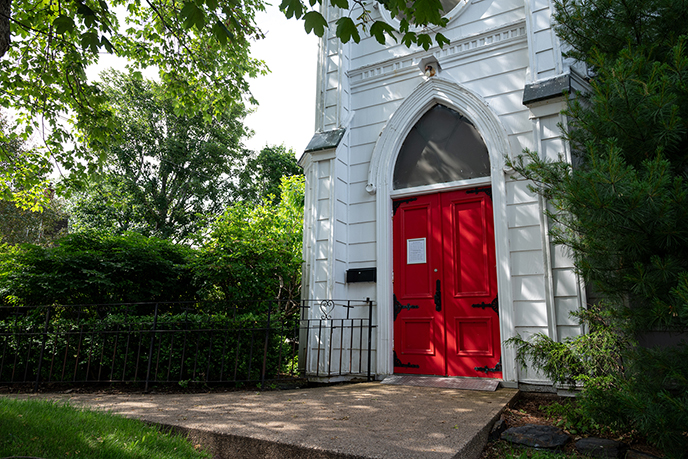
We took a guided walking tour through Lunenburg, which was a great introduction to the South Shore. The charming town was one of the first Protestant British settlements in Canada.
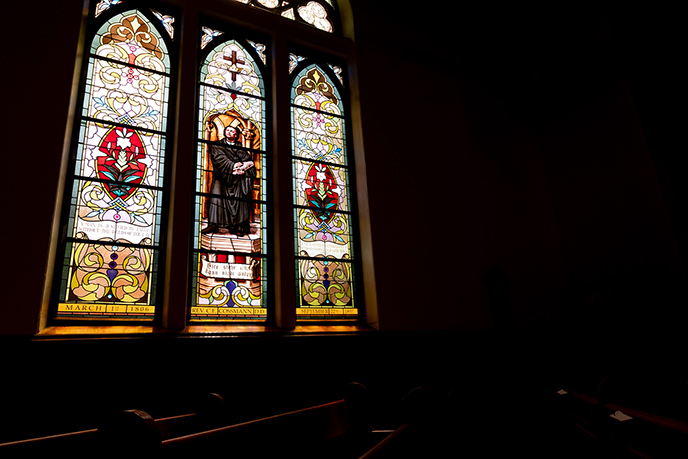
In 1995, Lunenburg became a UNESCO World Heritage Site, noted for its fine examples of 1800s wooden architecture. Another fun fact: many houses were built with identical-looking front and back doors to confuse the Devil, who only entered through the back (which is not surprising!)
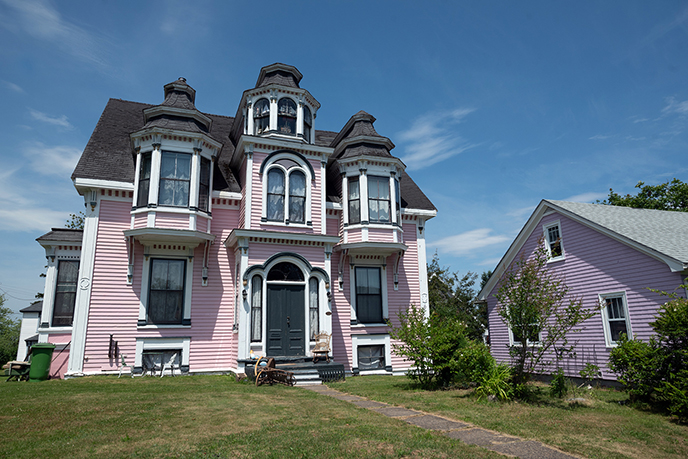
Here’s the “wedding cake house,” a pink home built in 1888 that is apparently haunted (it does look straight out of a horror film.)
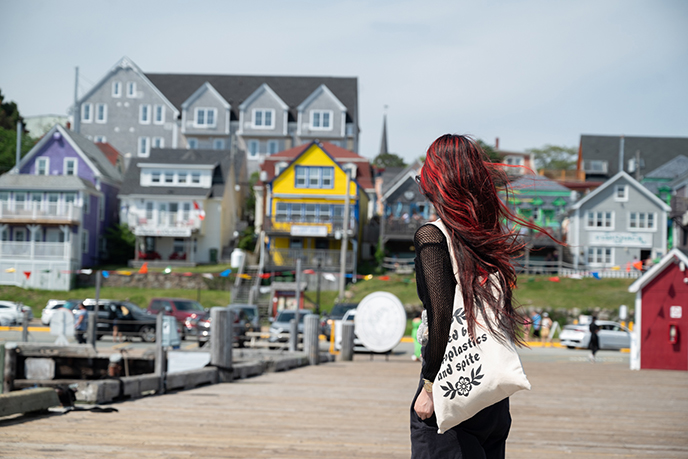
The tour ended at the Lunenburg Waterfront Marina, which was once a buzzing center of the Atlantic Canada fishing industry.
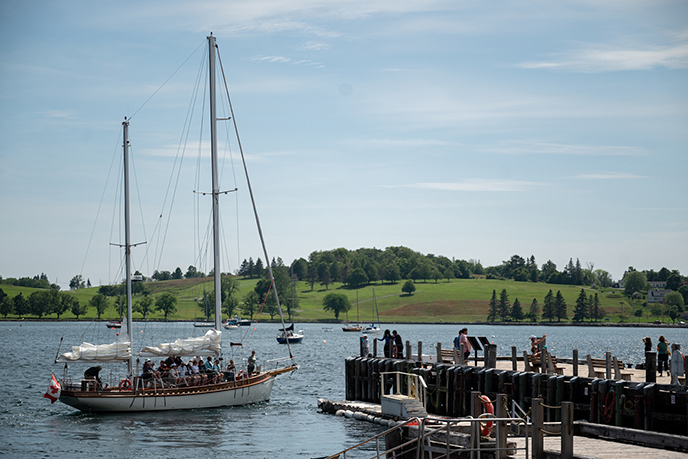
The original Bluenose racing and fishing schooner was also built at Lunenburg in 1921 (the ship was a Canadian icon until it was wrecked in 1946).
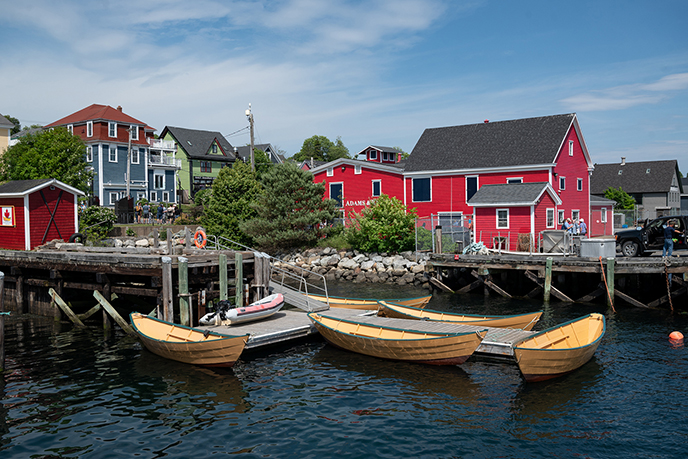
The Bluenose’s legacy is remembered through a Bluenose II replica ship, and is engraved on the back of the Canadian dime.
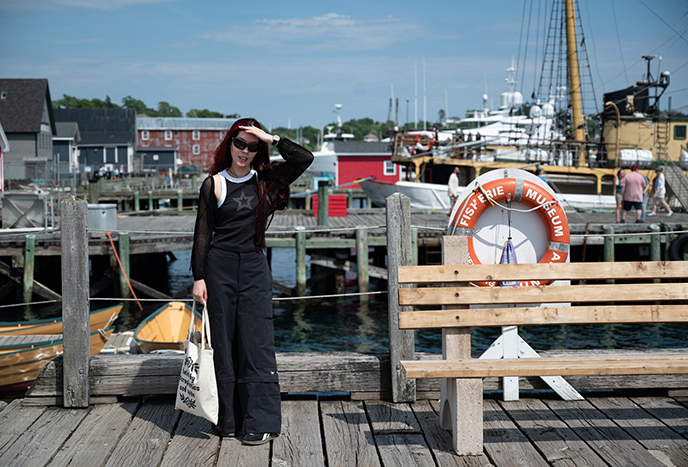
Loved strolling the waterfront marina and soaking in the seafaring history.
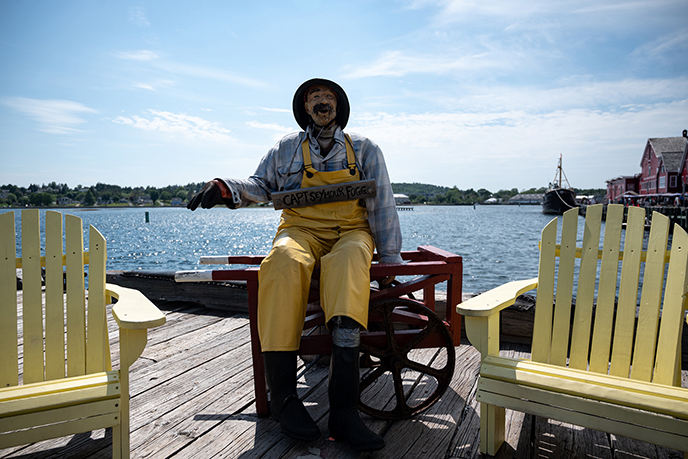
This classic fisherman scene made me think of the song: “I’s the b’ye that builds the boat / And I’s the b’ye that sails her / I’s the b’ye that catches the fish / And brings ’em home to Lizer!”
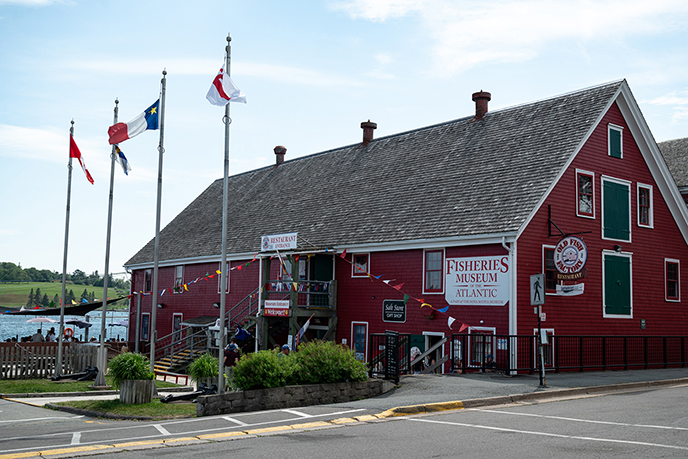
The Fisheries Museum of the Atlantic lets you learn more about the town’s fishing heyday.
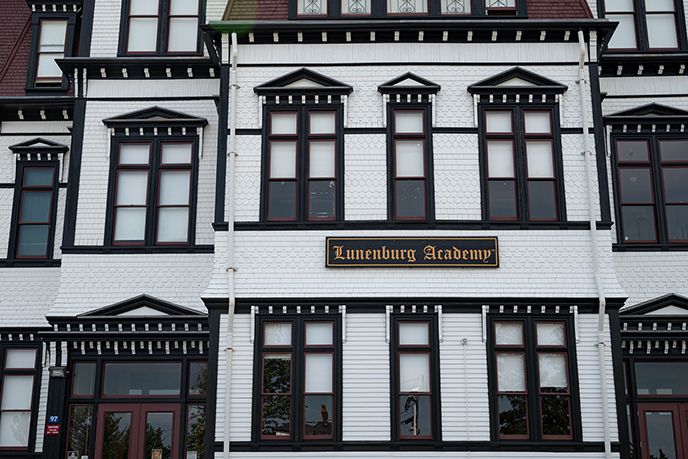
Another classic Victorian building: the late 19th century three story wooden Lunenburg Academy.
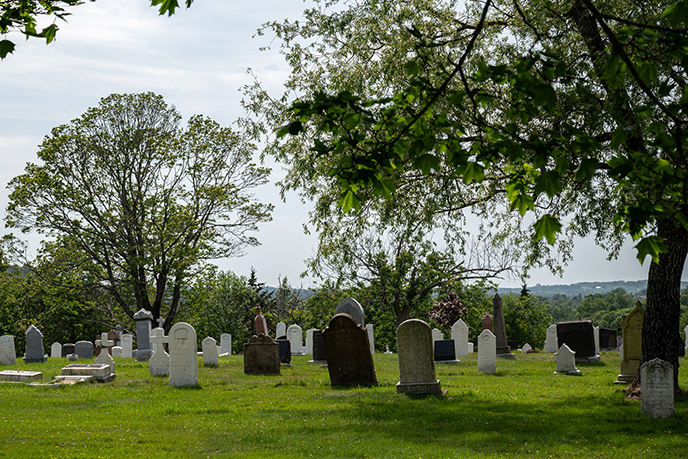
This Goth loves a haunted graveyard… You can take a ghost walking tour of Lunenburg at night as well to hear spooky tales.
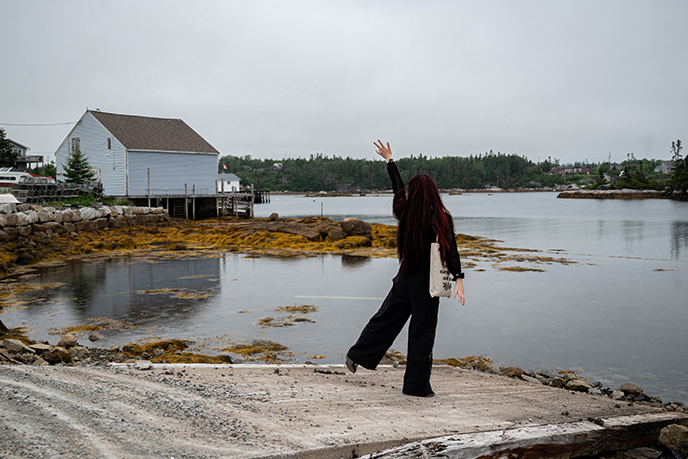
Pit stop at 19th century fishing village Peggy’s Cove. Photographer Joey Wong captured these photos from the deck by Shaw’s Landing restaurant, which is one of the province’s top seafood joints.
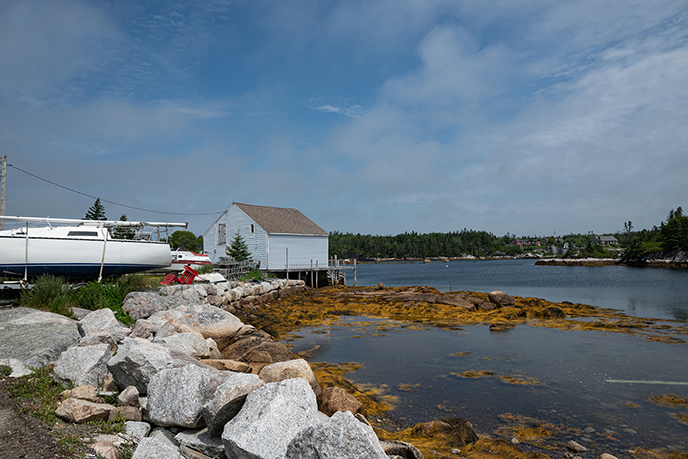
With fishing shacks and marine landscapes like this, it’s no surprise that Nova Scotia rocks when it comes to fish (like haddock), lobster, Digby scallops, and other seafood.
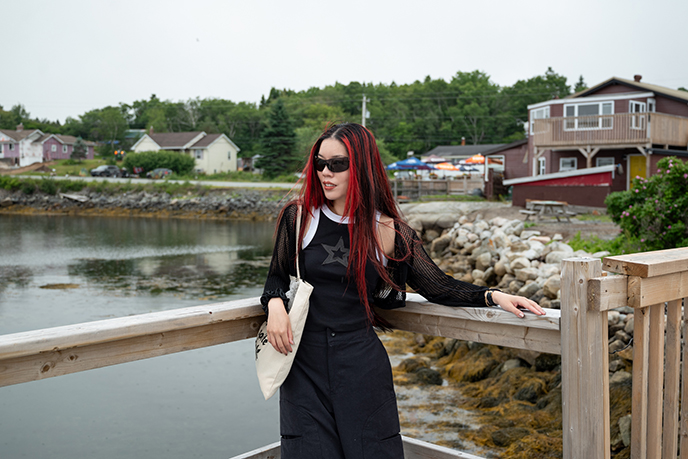
My Y2K outfit matches the chill, welcoming vibe of Nova Scotia that reminded us of the late 90s! (If only we could time-travel back then.)

At Shaw’s Landing, we devoured affordable lobster rolls, fish and chips, chowder, scallops and other marine cuisine. Believe me, Nova Scotian seafood lives up to its rep.

We found it relaxing to drive around the province (the roads are easy), and it let us take in the picturesque fishing villages, lighthouses and Atlantic coast landscapes along the way.
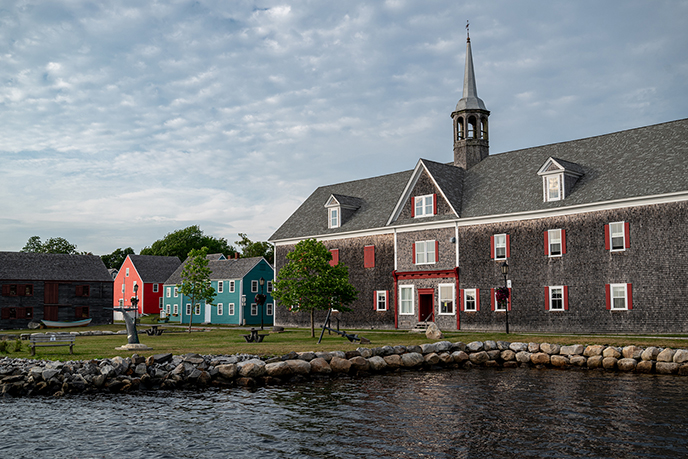
We drove an hour and a half southwest and were in Shelburne — a picture-perfect port town that immediately stole my heart.
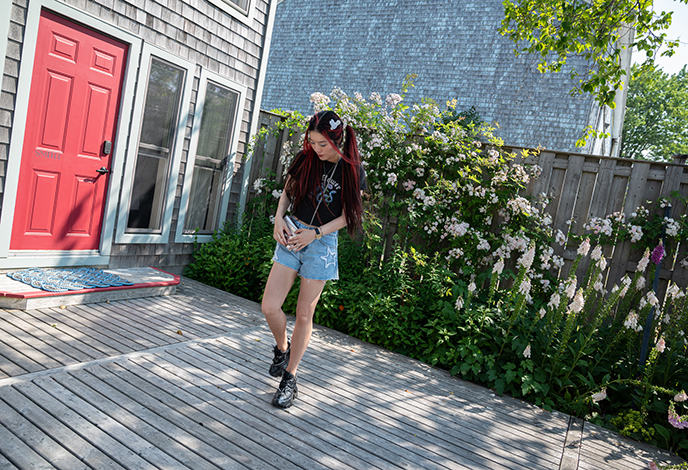
The 18th century Loyalist town is a photographer’s dream, and is still untouched by mass tourism — so you’ll get a chill, commercial-free experience. Everything is centered around the waterfront and easily accessible.
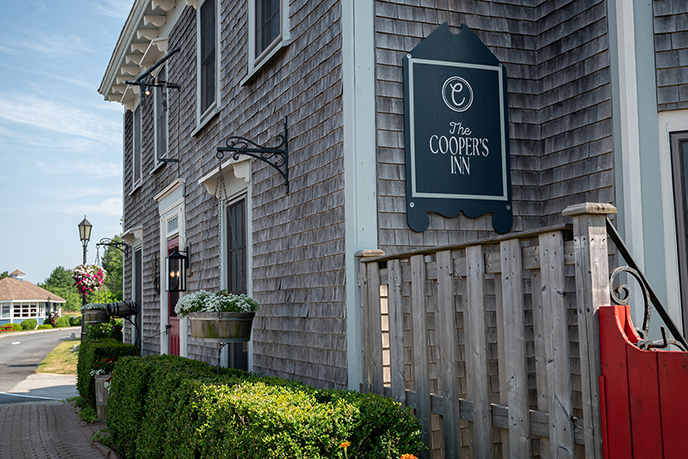
Stay at Amanda’s The Cooper’s Inn, a charming historic B&B with personalized hospitality. We loved chatting with her and getting to know her story (she moved here to escape the big city chaos, and adores the slower pace and peace of Shelburne).
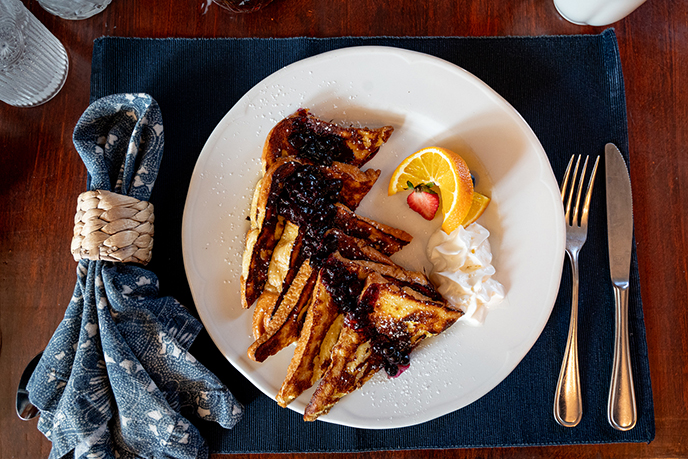
Can’t get over how kind and welcoming Nova Scotians are. And the food is outstanding everywhere — here’s the French toast that Amanda makes fresh for her guests.
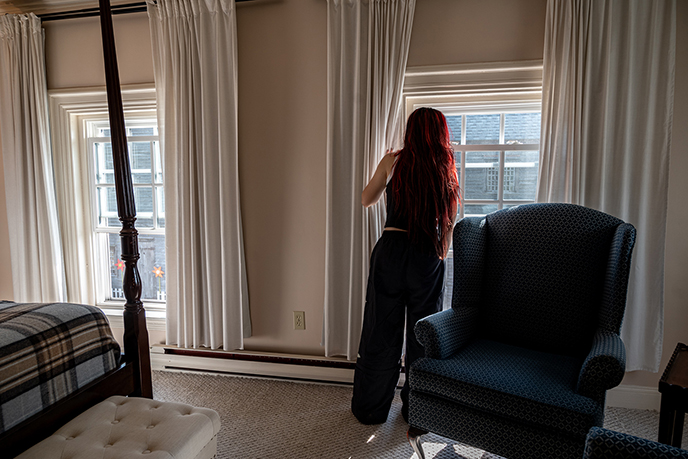
Cooper’s Inn is a boutique bed and breakfast with windows overlooking the seaside, and all the amenities you can think of for a luxurious, cozy stay.
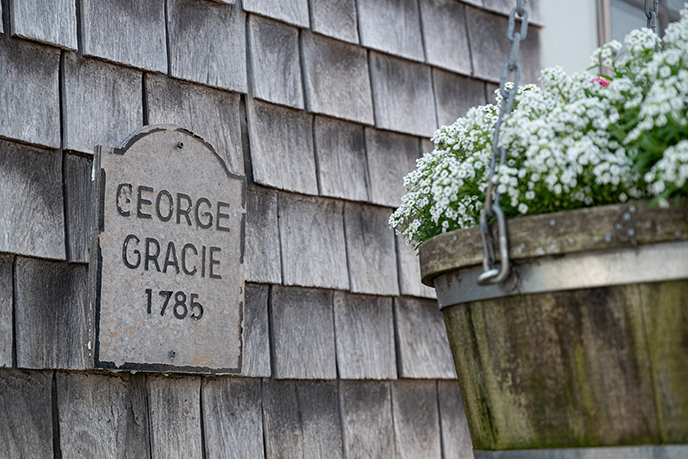
A tribute to the original owner, George Gracie. If there are ghosts in this inn, they’re friendly ones for sure!
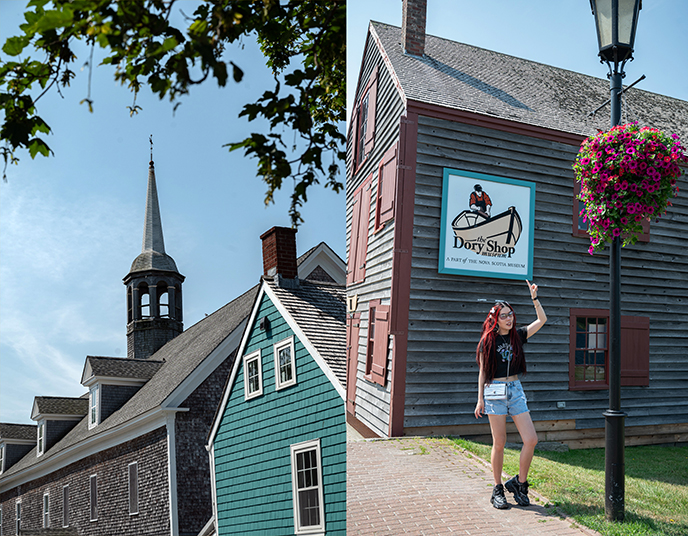
The main area, Dock Street, borders Shelburne Harbour. Here, you’ll find historic buildings and attractions like The Dory Shop Museum. Set in a building dating from 1865, it celebrates the classic wooden boats built here by hand.
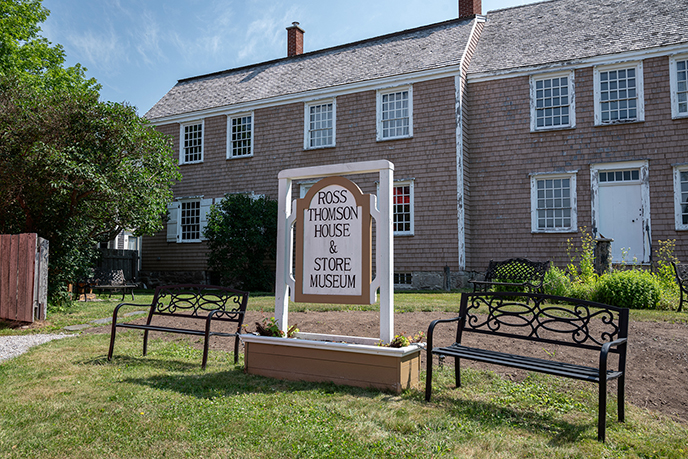
The Ross-Thomson House & Store Museum lets you get immersed in the 18th century life of two Scottish families that settled here.
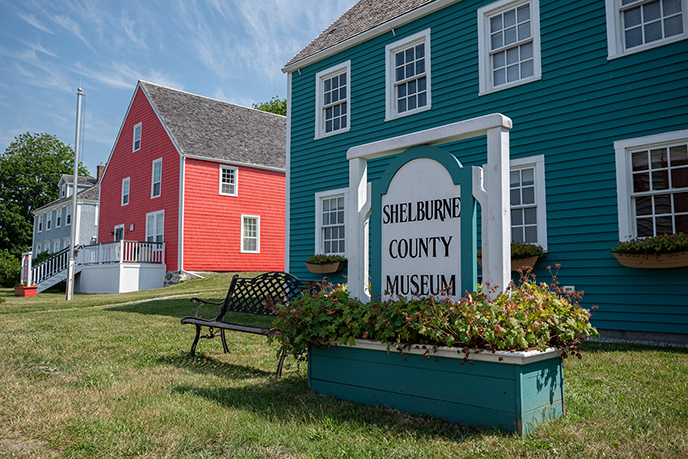
Then, learn about local history at the Shelburne County Museum, starting from the arrival of the Loyalists in the 1780s.
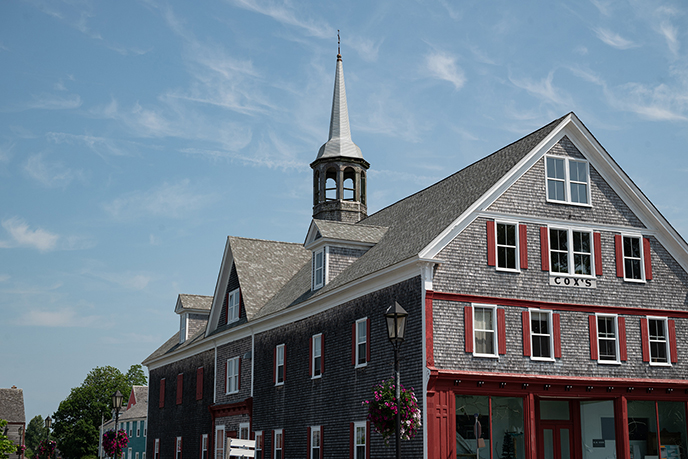
In the next post, I’ll do a full run-though of the restaurants we recommend throughout Nova Scotia — as there were so many highlights.
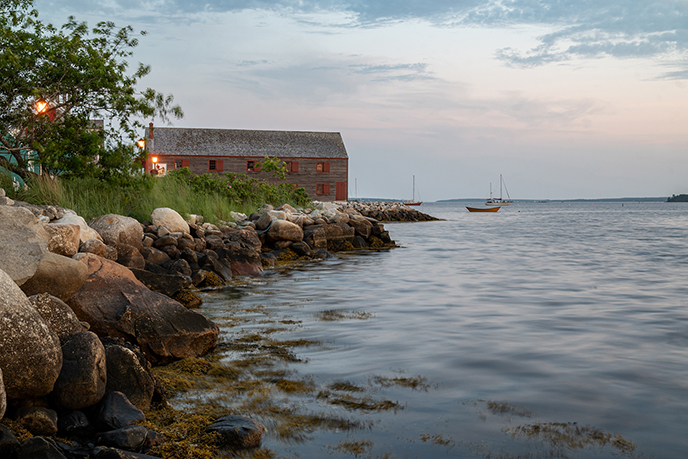
The fabulous pink sunsets at Shelburne’s 18th century waterfront are unforgettable.

The Cooper’s Inn glows at night. Shelburne is a photographer’s delight. (All images by Joey Wong)
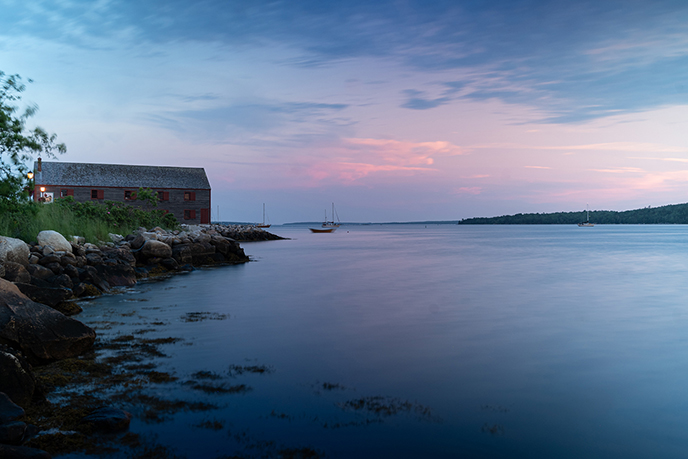
Check out the Discover Shelburne County site for more info on planning a trip here — a must if you’re coming to the province.
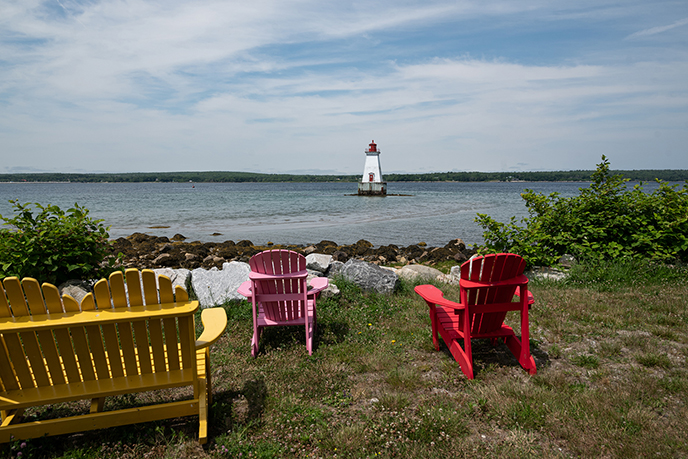
We did a detour to the nearby Sandy Point Lighthouse, a highly Instagrammable historic site. Nova Scotia has many adorable red and white lighthouses that add to the classic Maritimes feel. (We also stopped by the tall Cape Forchu, but foggy weather conditions didn’t make for good photos.)
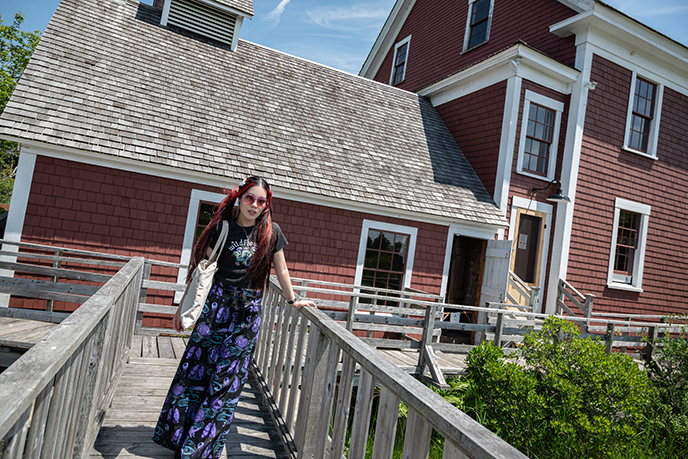
Nova Scotia’s specialty museums are well worth the visit for an intriguing look at the past. At Barrington Woolen Mill, I saw how river-powered turbines turned fleece to cloth in the late 19th century.

Watch my reel about Nova Scotian museums for footage from the mill and the other historic places covered in this blog. It was an important local business that used ingenious water-powered machinery to spin cloth.
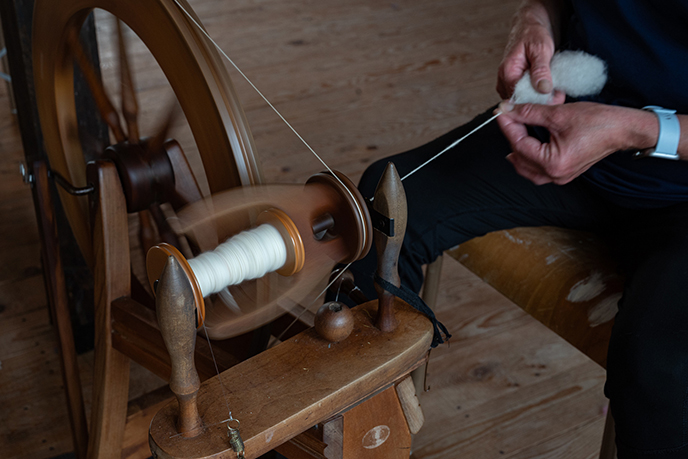
Visitors can learn how to use a spinning wheel straight out of Sleeping Beauty, as well as other old-timey activities like soap-making.

In The Collapse era, it’s more important than ever to recall the history of slavery and never-ending fight for freedom.
At the Black Loyalist Heritage Centre & Society in Birchtown, Nova Scotia, I learned about the largest free Black settlement in North America (founded 1783).

An arsonist destroyed a large number of its archives in 2006, but the Black Loyalist museum meticulously maintains its history through displays of period clothing, broken shackles, and documents relating to the immigration of African Americans to Nova Scotia.
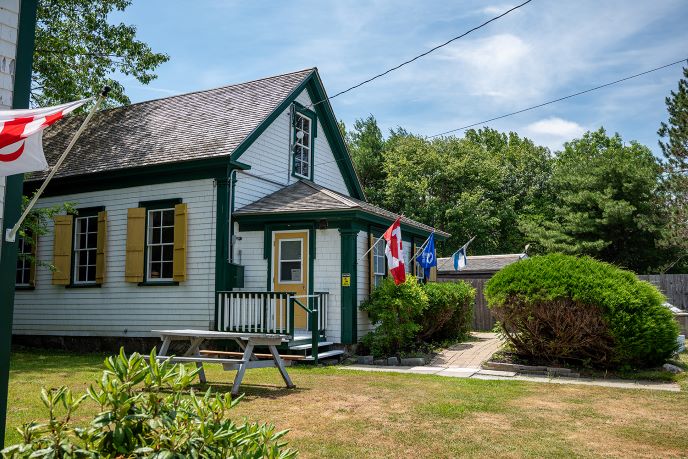
The Birchtown Schoolhouse is a one-room school from the 1800s that was run by the community.

The museum is well-designed, and the glass floor holds an Archaeological Pit with artifacts and the engraved names of former slaves.

The interactive exhibitions recall how Black Loyalists came together in Birchtown to overcome innumerable challenges, and the importance of continuing this work today.

Museums are vital if we want to remember our past and not repeat mistakes — and Nova Scotia is doing its part through vivid cultural attractions like these.
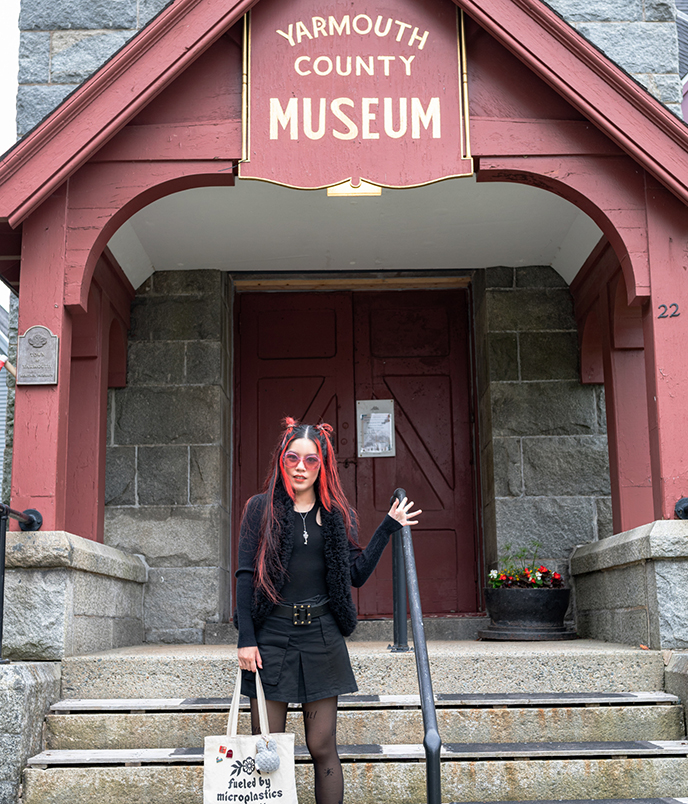
We continued our loop around the province to Yarmouth, an hour away (Nova Scotia is ideal for road trips with easy driving conditions and short distances between spots). I’m fueled by microplastics in front of Yarmouth County Museum & Archives, filled with 20,000 fascinating artifacts from the town.
My black square belt is by The Plain Circle Vintage — upcycled leather all the way. No plastics here, and I’m all about the Y2K style of the belt that Jennyfer sourced (she has lots of curated Goth-friendly vintage on her site).

Yarmouth County Museum is a treasure trove for oddities like Cape Forchu’s former lighthouse lens, which floated in mercury (the microplastics of that era!)
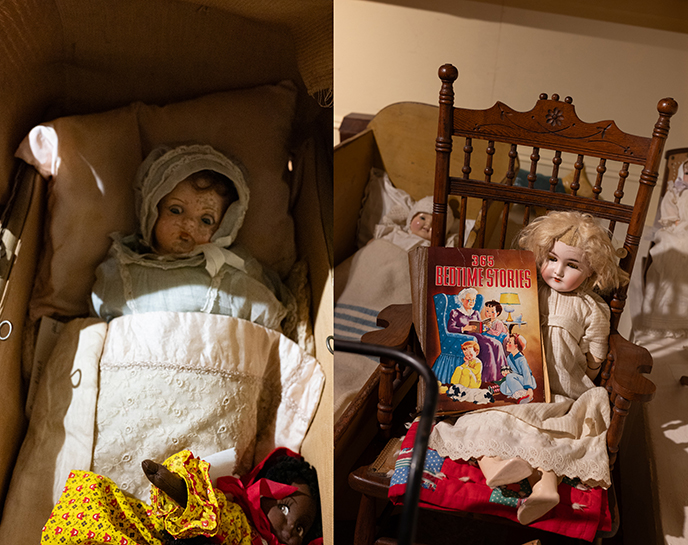
Potentially haunted dolls, questionable medical devices and other funky historic remnants kept us amused as we went from room to room.
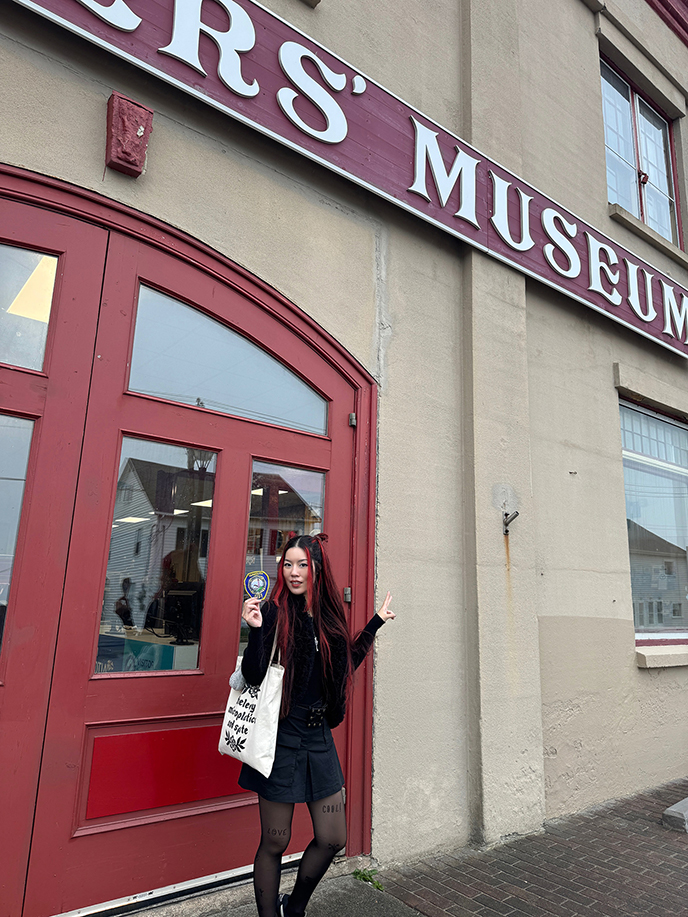
Yarmouth’s little niche museums are all within walking distance of each other. The Firefighters’ Museum of Nova Scotia fascinated me with its firefighting archives…
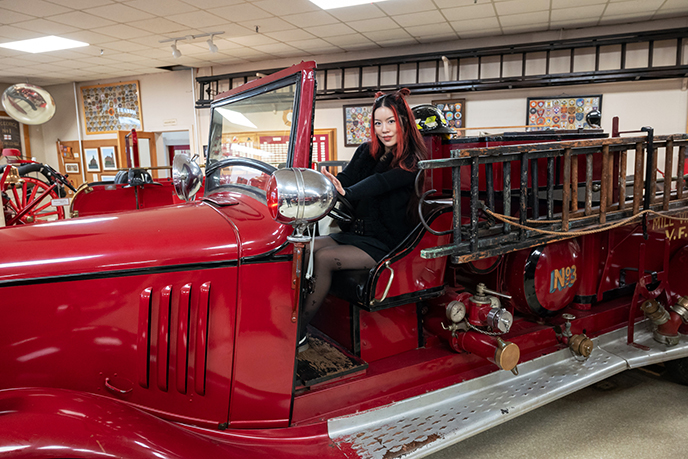
… especially the steampunk-y fire engines from the 1800s to 1930s. Watch out if you see me steering this big truck!
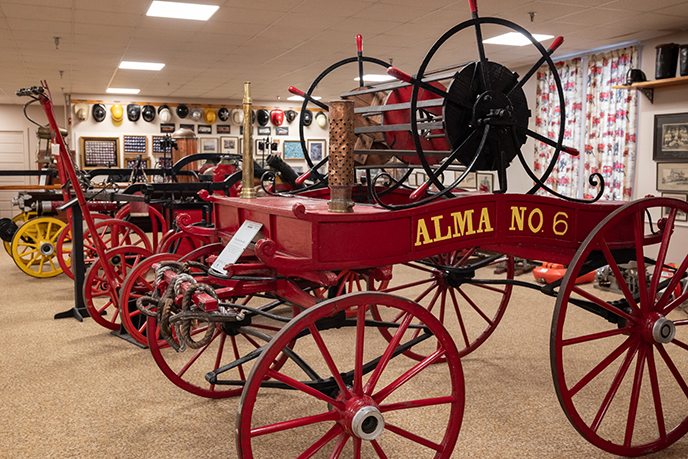
Wild to see the evolution of fire engines, from these wood and metal hand trucks to steam-powered colossuses.

Firefighters from around the world added their patches to the display (I was tickled to see an “Emo department” one!)
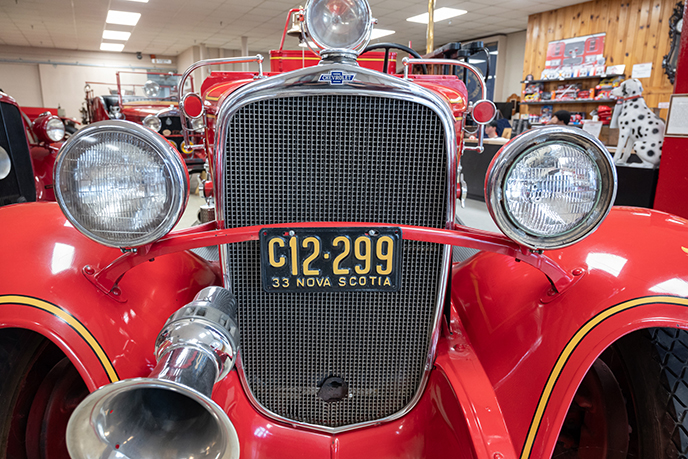
Watch my IG reel here to see me goofing around this museum and others.
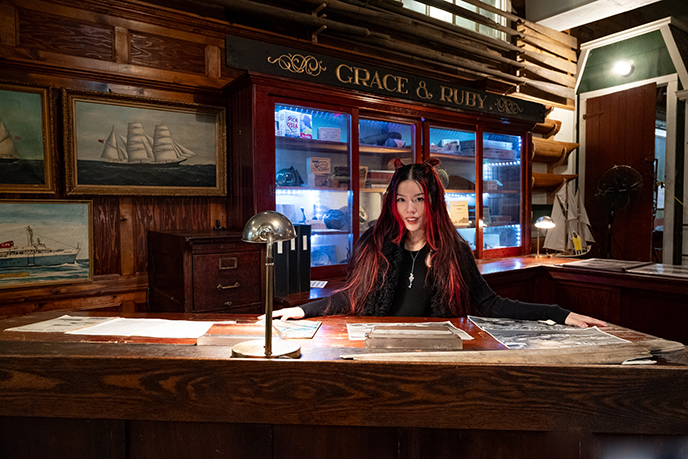
W. Laurence Sweeney Fisheries Museum took us back to Yarmouth’s fishing heyday through reproduced waterfront buildings and trawlers, yarrrr.

The museum houses artifacts from companies owned by Sweeney as well as scaled-down boats and buildings from the early 1900s.
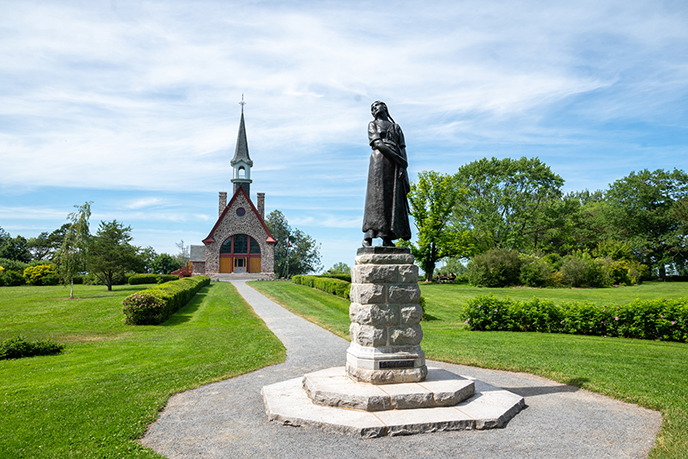
We kept driving northeast to Grand-Pré National Historic Site, which remembers the Acadian settlement and 18th century deportation. This powerful statue is of Evangeline, an Acadian icon of resilience during the Great Upheaval (when the British sent French-speaking Acadian settlers into exile).
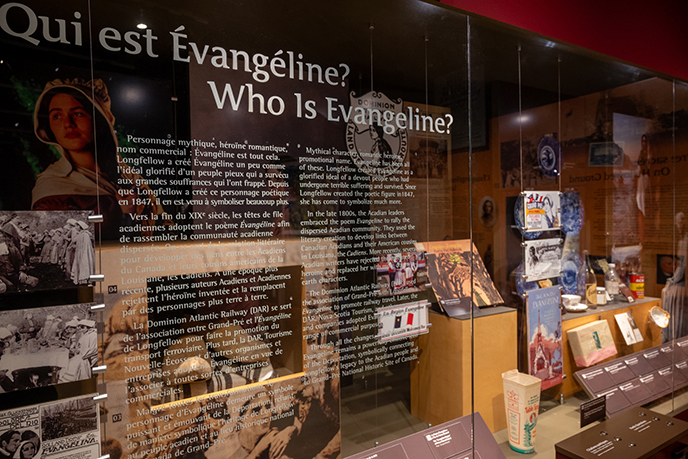
The exhibits tell the tale of Evangeline, the protagonist of a poem written by Henry Wadsworth Longfellow in 1847.
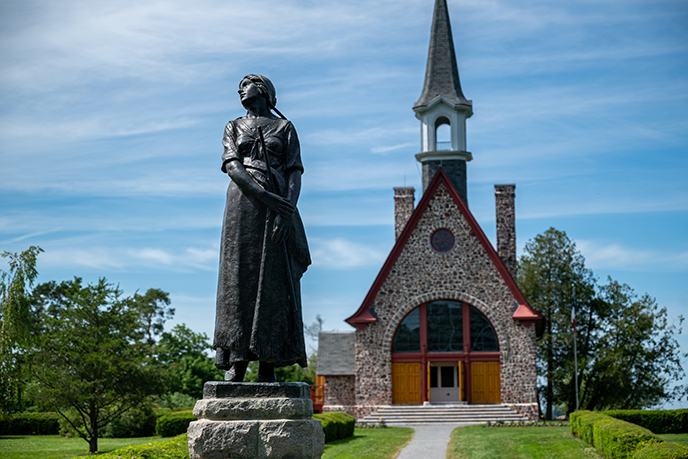
As she and her lover were separated by the deportation, Evangeline has become an a symbol of strength and perseverance.
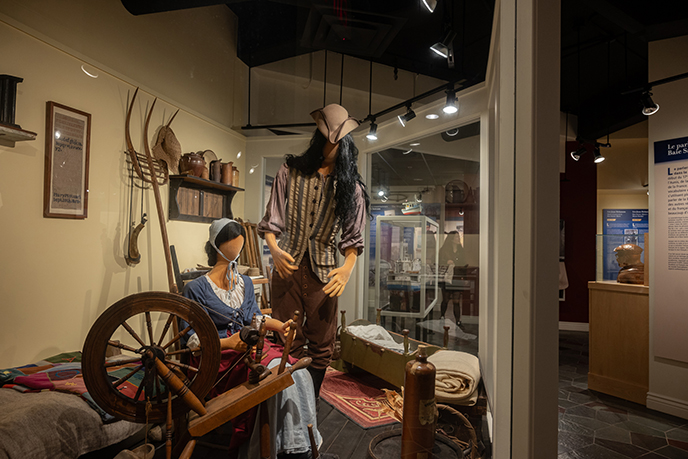
We learned more about Acadian culture at Rendez-vous de la Baie, an educational center in Baie Sainte-Marie. Fun fact: instead of saying “ouch,” Acadians would yell “AYOYE” (pronounced ah-yoy)!
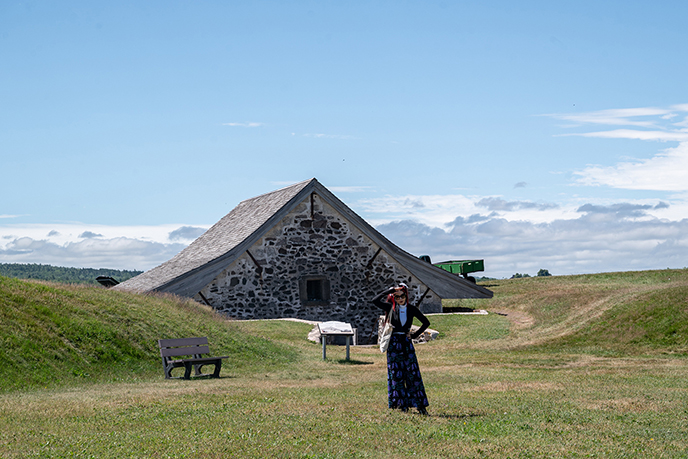
Before returning to Halifax, you’ve got to swing by Fort Anne National Historic Site in Annapolis Royal. The scenery reminded us a bit of our time on Easter Island.
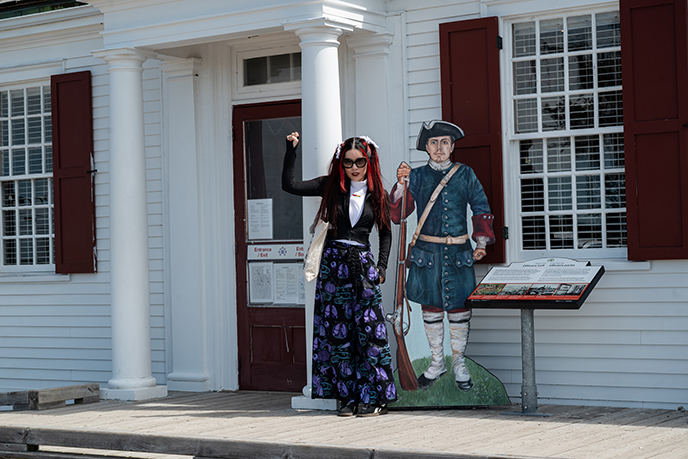
Fort Anne was built by Scottish settlers in 1629, making it the oldest fort still standing in Canada.
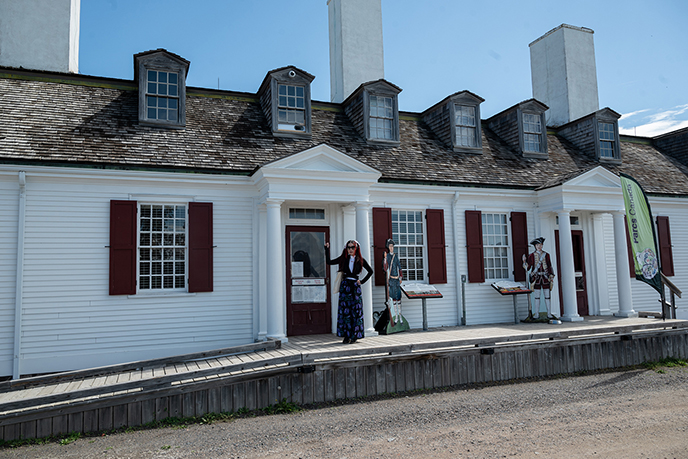
I’ll be showing you Halifax’s museums and historic destinations in an upcoming blog post, so stay tuned for that. Until then, you can see my reel about Halifax history sites.
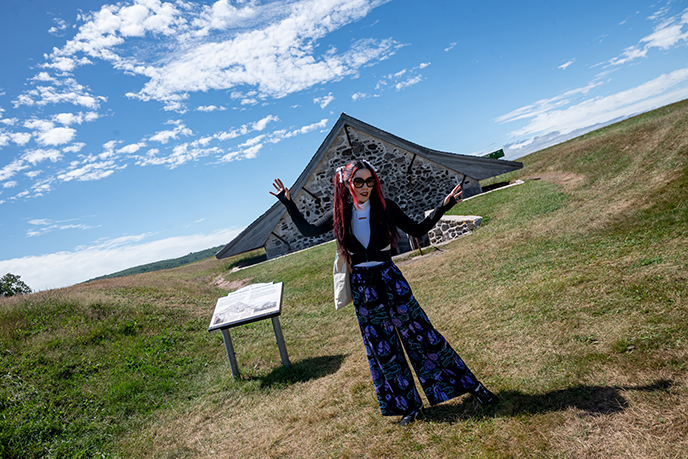
This triangle is the oldest military building in Canada, a powder magazine from 1708 designed to keep gunpowder dry.
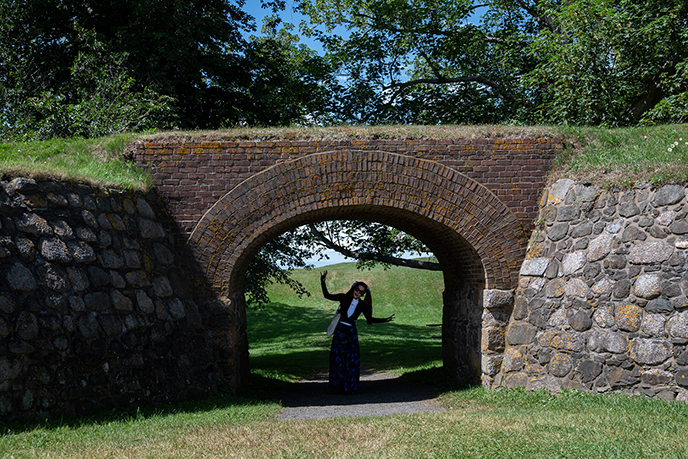
Fort Anne (formerly Charles Fort) was built in Annapolis Royal as this was the center of the early British and French settlements.
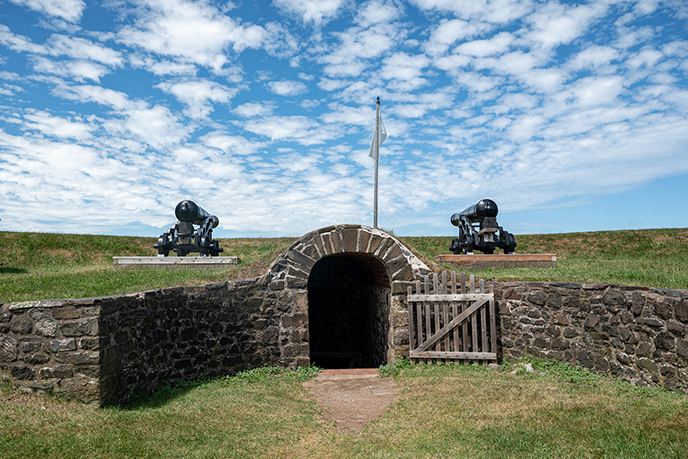
Throwback to the days when warfare involved canons, thigh high boots and tricorn hats.
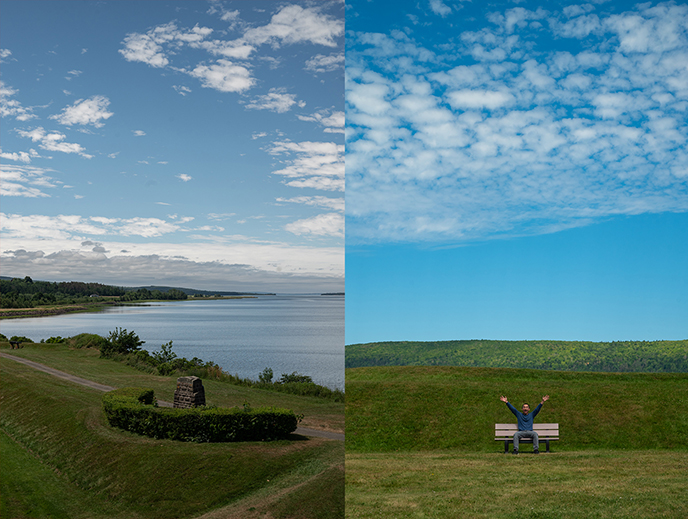
The Annapolis and Allain rivers come together at this spectacular site. Photographer Joey Wong and I can’t thank Visit Nova Scotia and HMI Creator Coast enough for making this journey possible!
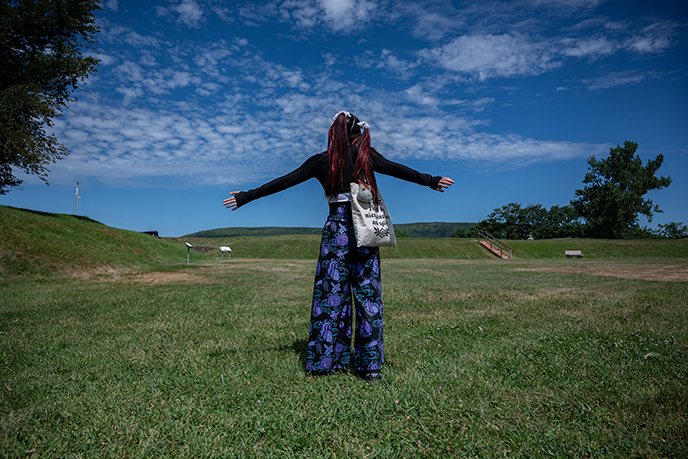
In a time when many destinations are pricy and over-touristy (and I’m avoiding going to the US), it was a relief to travel in Nova Scotia and relax in small, friendly Maritime towns. Wouldn’t you like to hang here with me?

I think you can tell that we had the best time road-tripping around this ocean playground! Check out Nova Scotia’s website for everything you need to plan a trip to the province.
For video footage of all these Nova Scotian sites, enjoy my reel here — and see more snaps on IG @lacarmina. Next up, I’ll feature Halifax’s museums and historic destinations, as well as all the outstanding food I enjoyed on this trip!
SHARE & COMMENT

 LA CARMINA
LA CARMINA







3 Comments
Oh wow, i absolutely love your photos the background scenery look’s so peaceful and relaxing. Love the pink sunset on the waterfront it’s gorgeous, and the historic buildings look amazing. As usual, your outfits are adorable you look really cute. I really like the photo of the Coopers Inn bed and breakfast overlooking the seaside, i look forward to your next blog post. Reading your blog always makes my day.
I’m delighted you like this one – it was one of the most meaningful trips in a while! I have tons more to come from the Nova Scotia journey soon :)
This guide beautifully captures the charm of Nova Scotia’s historic sites.